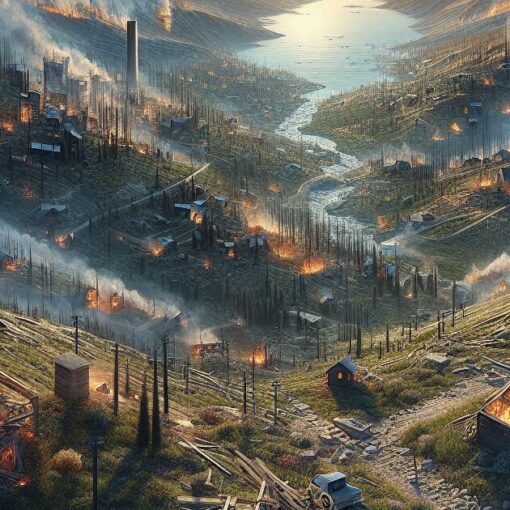Please Note: This post may contain affiliate links. If you click one of them, we may receive a commission at no extra cost to you. As an Amazon Associate, I earn from qualifying purchases.
Life moves so fast, doesn’t it? Sometimes staying connected during emergencies feels impossible. Like searching for a needle in a haystack. But picture this: the haystack is on fire, and the needle’s buried under snow. Yikes!
Top Takeaways and Key Concepts
- Write down emergency contact numbers and store them in multiple places for easy access.
- Choose primary and backup family meeting spots to reconnect if you get separated.
- Assign an out-of-town contact person to relay messages when local networks fail.
- Use multiple communication methods like cell phones, walkie-talkies, and written notes.
- Practice your emergency communication plan regularly and adjust as needed.
Summary of This Article
This article explains how to stay connected with family during emergencies by creating a simple communication plan. It encourages writing down important contact numbers, establishing meeting locations, and choosing an out-of-town contact to coordinate messages when local communication is disrupted. The article highlights the value of using backup tools like radios or paper notes if phones fail and stresses practicing the plan so everyone knows what to do. With a lighthearted tone, it reminds readers to stay flexible, work together, and use humor to stay calm during stressful times.
Video Version of This Article
When something big happens—like a storm or an earthquake—having a plan to talk to your family and friends is super important. It’s kinda like remembering to pack your favorite snacks for camping. You just can’t forget those chips, right? A good snack makes everything better!
Creating an emergency communication plan isn’t as hard as it sounds. Start with writing down phone numbers of people you trust. If your phone dies, you’ll have that info handy. Maybe even make a little card you can keep in your wallet or backpack.
Think about where you’d meet if things get tricky too. Maybe there’s a tree by the park where everyone loves to hang out? Or maybe Grandma’s house? Just pick a spot that feels safe and easy to remember.

It helps to choose one person outside of town as your main contact too. If local phones are down, talking through someone far away can really help keep everyone updated.
And hey, let’s not forget about humor! Laughing during tough times helps us feel better. Imagine trying to send messages with funny drawings instead of words! Or using silly code names for family members… “Captain Snuggles” could be Mom!
Staying connected is all about being ready without stressing too much. It’s okay if plans change or don’t go perfectly; we’re all learning together here.
So next time you’re sipping coffee or munching on some snacks, think about making that plan! It’ll give you peace of mind knowing you’re ready for whatever comes your way—even if it feels like finding that pesky needle in the crazy haystack!
Why You Need an Emergency Communication Plan
Let’s face it: when the going gets tough, the last thing you want is to be fumbling around with your phone, wondering if you should send smoke signals or carrier pigeons.
You know how it goes. One minute, everything’s calm. The next? Chaos! Like when my dog, Max, spots a squirrel and takes off into the neighbor’s yard during a thunderstorm. I’m standing there, heart racing, trying to figure out what to do.
An emergency communication plan can really help in those wild moments. It makes sure everyone knows what to do when things go sideways. No one wants that awkward moment of standing around looking confused while loved ones are texting “Where are you?” from their secret hideouts. That just adds to the stress!
Think about it like this: if something happens—like a storm or any kind of trouble—you want your family to be on the same page. Having a clear plan means you won’t have to run around yelling or waving your arms like you’re doing interpretive dance (though I bet that would be funny).
Start by picking a spot where everyone will meet if something goes wrong. Maybe it’s under that big tree at the park or right outside your front door? Just somewhere easy for everyone to remember.
Make sure everyone has each other’s phone numbers too! Write them down on paper or save them in your phones. If the power goes out and phones die, having numbers handy is super helpful.
It’s also good to decide who will check in with whom first. You could say, “If we get separated, I’ll text Aunt Lisa.” That way, no one’s left wondering where anyone is.
And hey, keep it light! This doesn’t have to feel heavy or scary. Share some laughs while planning together. Maybe even joke about how Max would probably still chase squirrels even during a storm!
The goal here is simple: keep everyone informed and safe without all the confusion. We want smooth sailing through rough waters—not chaos! A little prep now can make such a difference later on when things get crazy.
So grab that cup of coffee and start chatting about your plan! It’ll make you feel better knowing you’re ready for whatever comes next—even if it means chasing after a naughty pup in the rain!
Identifying Your Communication Methods
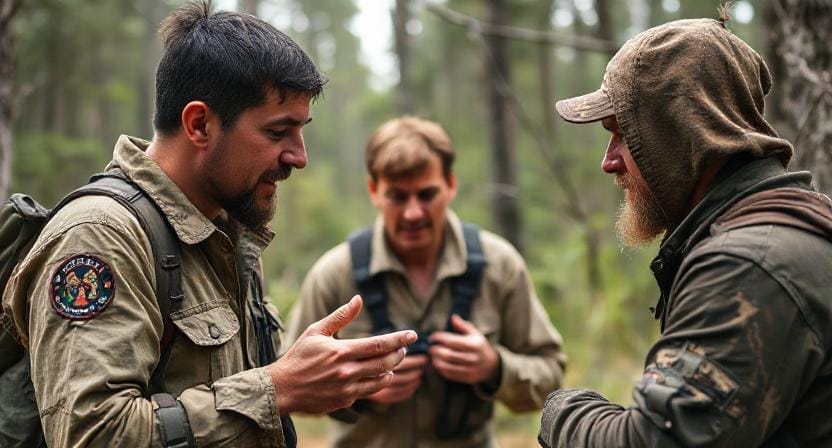
Now that we understand why we need this plan, let’s figure out how we’re going to communicate. Honestly, there are more options than ever before! You could use cell phones, two-way radios, social media platforms, or even good old-fashioned landlines if you’re feeling nostalgic about 1995.
Oh man, I remember this one camping trip. My buddy thought he was so clever, relying on his flip phone because he kept saying, “It has great battery life!” Well… spoiler alert: it didn’t. We were out in the woods, and guess what? His phone died faster than you could say “s’mores.”
That’s why thinking about different ways to communicate is super smart. If something goes wrong—like a power outage or if your Wi-Fi just decides to take a vacation—you want backup options ready to go. You don’t wanna be stuck in the middle of nowhere with no way to reach anyone.
Think about it. Maybe you could use walkie-talkies or even have a plan for sending messages by shouting really loud (just kidding). But seriously, having multiple methods can make all the difference when things get tricky.
And let’s not forget about old-school methods! Writing down important numbers and addresses on paper is such a good idea. Those won’t run out of battery or disappear into cyberspace like some texts do. You can stick them in your wallet or tape them inside your camping gear bag. Easy peasy!
Imagine needing to call someone but realizing your phone’s dead and you forgot everyone’s number. Yikes! Just having that little piece of paper can save a lot of headaches.
So while we’re sipping coffee and chatting about all this, think about how nice it would feel knowing you’re prepared for anything—even if that means dealing with a stubborn flip phone! It’s all about being ready and feeling safe, right? And hey, if nothing happens? Great! You’ll just be extra prepared for the next adventure!
Establishing Contact Points
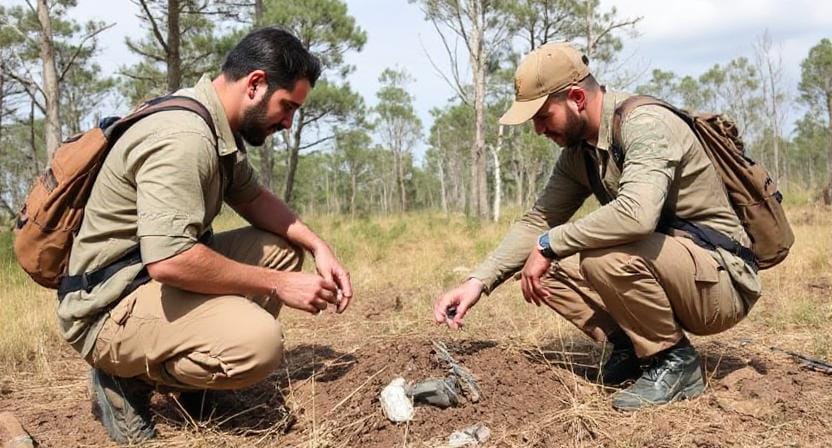
Alright, let’s talk about contact points. This is super important. Think of them like your special meeting spots—kind of like where you’d meet up with friends if things go a little crazy, faster than I can say “hot dog!”
Pick places that everyone knows well. They should be easy to remember but also safe, like not choosing the local donut shop during an earthquake (unless donuts are part of your survival plan—totally valid!). Imagine trying to get there while everything’s shaking. Yikes!
Having more than one spot is smart too. You know, just in case something happens at your first choice. Like if trees fall down after a storm (thanks a lot, Mother Nature). If that happens, it’s great to have another place ready to go.
Picture this: Everyone’s looking for each other and someone goes to the wrong spot or gets stuck somewhere because they didn’t have a backup plan. That would be such a mess! You don’t want anyone wandering around aimlessly like me when I can’t find my car keys after grocery shopping. Seriously, it’s like they disappear into another dimension.
So maybe choose a park or a friend’s house nearby as options. Make sure everyone knows these places ahead of time so it feels natural when you need to use them. It’ll give everyone peace of mind knowing there’s a plan.
And hey, chatting about all this makes it feel less scary, right? Just being prepared helps us feel better about whatever might come our way! Let’s keep those lines of communication open and make sure we’re all on the same page—donuts optional!
Communicating During Disasters
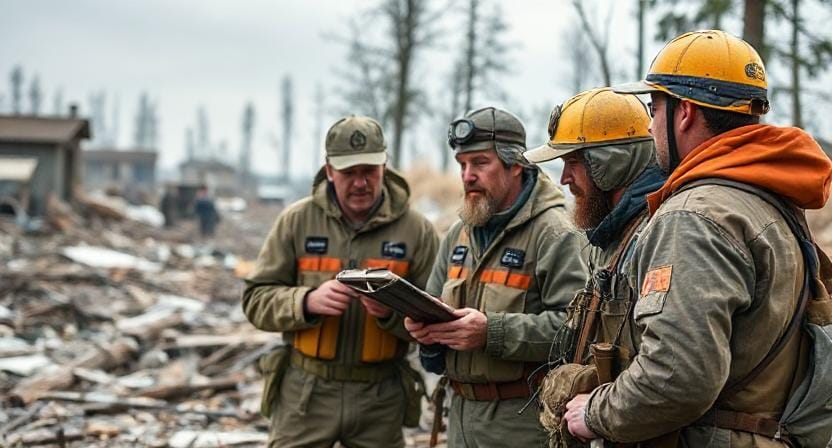
Okay, so you’ve got your methods and contact points all set. Now it’s time to dive into some real planning about how you’ll talk during an emergency. This isn’t just about sending texts or making calls. It’s more like thinking through different situations ahead of time so everyone knows what to do.
Imagine this: severe weather is coming toward town. What’s the plan? Will you text everyone? Call them up? Maybe use walkie-talkies? Oh, or how about sending Morse code with a flashlight? That would be kind of fun and dramatic! Whatever you pick needs to be super clear in your emergency communication plan.
It’s also good to think about who will be in charge when things go sideways. You want someone responsible for gathering information and sharing updates—preferably someone who doesn’t freak out at the sight of a spider (like me!). Keeping calm is key.
You could even have practice runs. Like pretend there’s a big storm coming and see how everyone responds. It can feel silly, but it helps people know exactly what to do when it really counts.
And yes, make sure that everyone is a part of this planning! There shouldn’t be just one person in charge of everything. Everyone should have a say so they feel like they are part of the team.
Making plans together might also help ease worries. It makes things less scary to know that there is a plan, right? Let’s keep those lines open and be ready for anything that comes our way!
Practice Makes Perfect
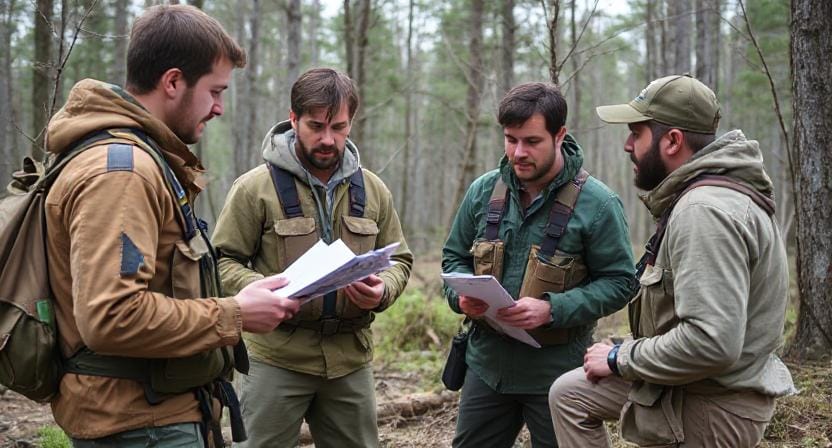
Now comes one of the most fun parts: practicing your communication plan! Just like when you rehearse for a school play or try to figure out how not to burn marshmallows over a fire, it takes practice to get things right.
Gather everyone together—maybe over some pizza. Who doesn’t love pizza? Run through different scenarios together. What happens if there’s an earthquake? Or a flood? Oh, and what if Aunt Edna shows up unexpectedly? You never know!
Make sure everyone feels comfy using whatever tools you’ve picked. If you’re using walkie-talkies, let them have a go at it. Maybe even pretend to be secret agents for a bit. That could be fun!
Don’t forget to add some humor while you practice. Laughter can really help ease any nerves. Imagine pretending you’re trapped under pillows and couch cushions. It might feel silly, but that’s okay! Being silly can make everything less scary.
You want everyone to feel included and ready for anything. Practicing helps build confidence too. When something does happen, everyone will remember what to do because they practiced together.
So grab that pizza, gather the family, and get ready for some laughs while you work on your emergency plan! You’ll feel so much better knowing you’re all set for whatever comes your way!
Staying Flexible and Adapting
Last but not least, be flexible! Things don’t always go as planned when there is an emergency. They can catch you off guard, like when your dog suddenly starts to chase a squirrel. It’s crazy!
I wish life would go along with my flawless ideas, like locating the best places to have a picnic. But what about reality? It really likes to throw curveballs. So, it’s important to be ready for anything.
When things change, tell everyone in the family to shift their duties. It’s fine if someone needs to take charge or change tasks. Let them know that it’s all part of the plan.
Ask for feedback after you practice together. What went well? What didn’t work? This helps everyone get better for the next time. No one wants their carefully thought-out plans to go wrong because of unexpected problems!
Being open to new ideas makes your team stronger. You’ve talked about and practiced what you’ll do, so you’ll feel more ready for anything that comes your way.
So keep talking to each other and be ready for everything! Things don’t always go as planned in life, but if you’re willing to be flexible, you’ll be able to handle anything that comes up!
Frequently Asked Questions
What is an emergency communication plan and why do I need one?
An emergency communication plan is a simple strategy that helps you stay in touch with your loved ones during disasters like storms, power outages, or earthquakes. It ensures everyone knows who to contact, where to meet, and how to share information so no one is left confused or alone during a crisis.
What should I include in my emergency communication plan?
Your plan should include updated phone numbers, a designated family meeting spot, an out-of-town contact person, and backup communication tools like radios or written contact cards. These basics make it easier to reconnect if cell service goes down or phones die.
Why is it important to choose an out-of-town emergency contact?
Local communication systems often fail during emergencies, but long-distance lines sometimes still work. An out-of-town contact can act as a central check-in point, helping family members share information when they can’t reach each other directly.
What are some good backup communication methods if cell phones don’t work?
Walkie-talkies, battery-powered radios, landlines, and even written messages can be great alternatives. Keeping a small notebook with important numbers or a whistle for signaling can also help when technology fails.
How do we choose safe meeting locations in case we get separated?
Pick familiar and easy-to-find places, like a park, a friend’s house, or a community center. Always choose a primary and backup meeting spot in case one becomes unsafe or unreachable during the emergency.
How often should we practice our emergency communication plan?
Practice your plan at least twice a year. A quick family drill helps everyone remember what to do and makes the plan feel natural instead of stressful. The more you practice, the calmer you’ll be in a real emergency.
What if our communication plan doesn’t go as expected during a real emergency?
That’s totally normal—no plan is perfect. Stay flexible, adapt to the situation, and communicate changes with your group as quickly as possible. The goal isn’t perfection—it’s staying connected and staying safe.
Suggested External Resources:
Emergency Preparedness Guide
https://www.ready.gov/prepare
FEMA Emergency Communications
https://www.fema.gov/emergency-communications
American Red Cross Emergency Preparedness
https://www.redcross.org/get-help/how-to-prepare-for-emergencies.html

Kevin Collier is a seasoned outdoor enthusiast and writer for Trekbug.com, specializing in outdoor adventures, survival strategies, and prepping insights. With a deep love for nature and a commitment to self-sufficiency, Kevin empowers readers to embrace the wilderness confidently. He shares valuable tips, practical techniques, and inspiring stories, helping both novice and experienced adventurers develop essential skills for surviving and thriving in the great outdoors.



